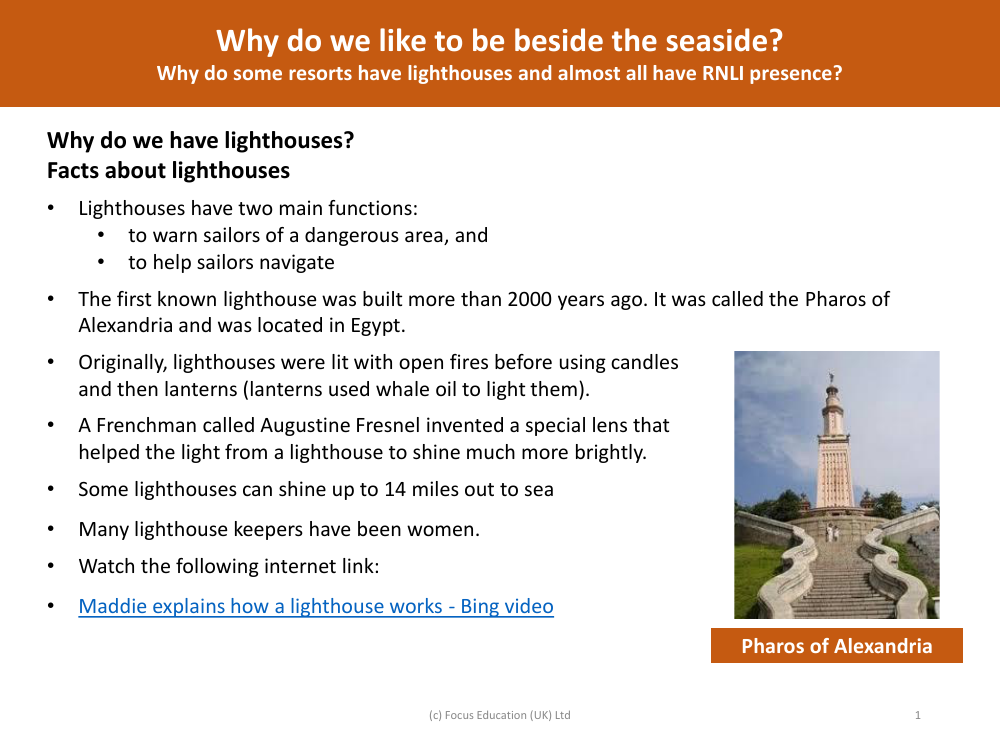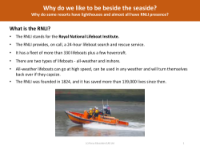Lighthouses - Info sheet

Geography Resource Description
Lighthouses serve as vital navigational aids for mariners, fulfilling two primary roles: they act as a warning signal for sailors to steer clear of hazardous areas and assist in their navigation. These coastal beacons have been guiding ships for over two millennia, with the renowned Pharos of Alexandria, built in Egypt, being the earliest known example. Initially, lighthouses used open fires to emit light, which later evolved to candles and eventually to lanterns that burned whale oil for illumination. A significant advancement in lighthouse technology came with the invention of the Fresnel lens by a Frenchman named Augustine Fresnel, which greatly amplified the light's intensity, allowing some lighthouses to project their beams up to 14 miles out to sea. Interestingly, many lighthouse keepers throughout history have been women, showcasing their critical role in maritime safety.
The fascination with the seaside and its accompanying structures, such as lighthouses, is apparent in many coastal resorts. These lighthouses not only add to the charm and character of the seaside but also ensure the safety of vessels navigating near the shore. Additionally, the presence of the Royal National Lifeboat Institution (RNLI) is common in these areas, providing a crucial service in the form of life-saving operations and maritime assistance. The combination of picturesque lighthouses and the diligent work of the RNLI contributes to the appeal and security of seaside resorts, making them beloved destinations for both leisure and maritime activities.






